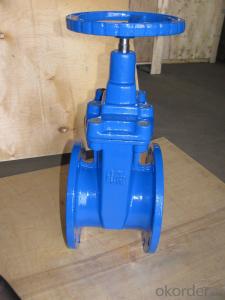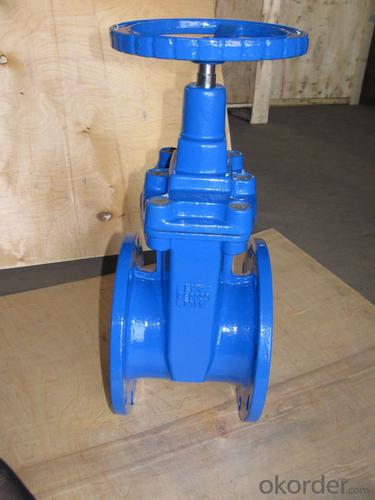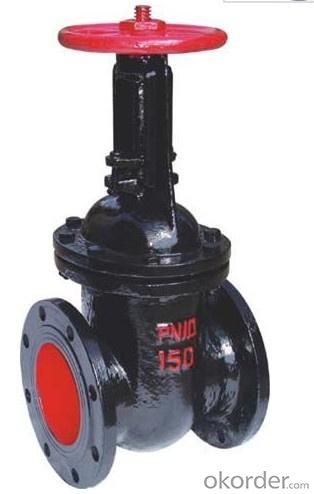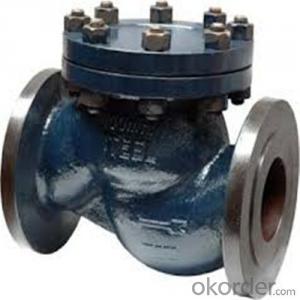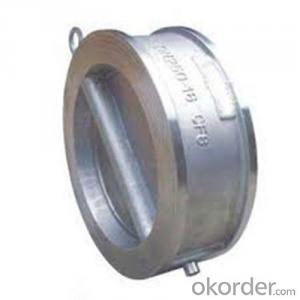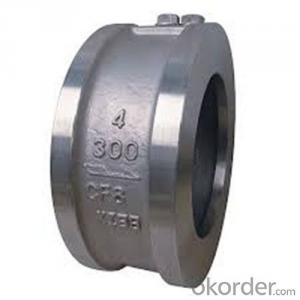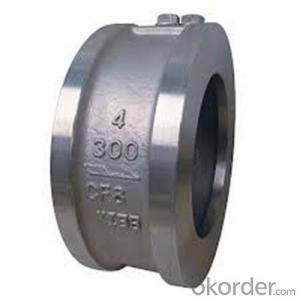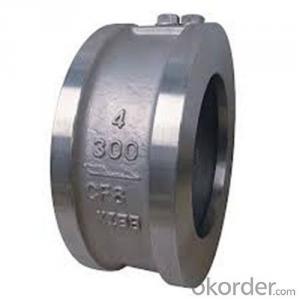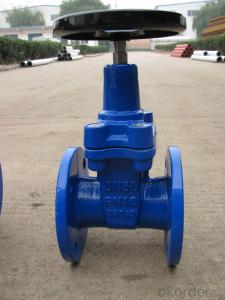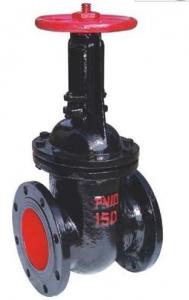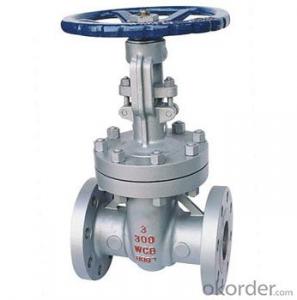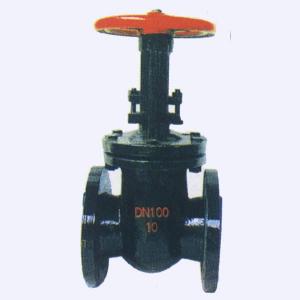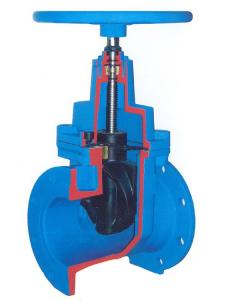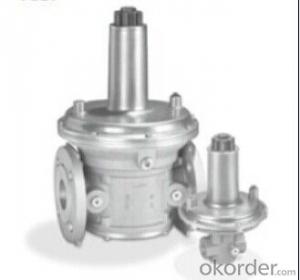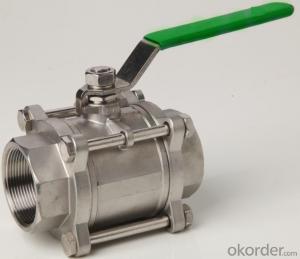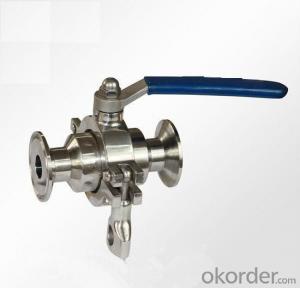Gate Valve for High Quality Water System on Sale
- Loading Port:
- China main port
- Payment Terms:
- TT or LC
- Min Order Qty:
- 1000 set
- Supply Capability:
- 60000 set/month
OKorder Service Pledge
OKorder Financial Service
You Might Also Like
1. Structure of Gate Valve Description:
1. Selected materials, in line with domestic and international standards, high overall quality of the material.
2. In line with the requirements of domestic and foreign advanced standards, reliable sealing, excellent performance, attractive appearance.
3. Sealing pair advanced and reasonable, gate and seat sealing surface with different hardness Stellite (Stellite) cobalt-based alloy cladding made, reliable sealing, high hardness, wear resistance, high temperature, corrosion good anti-abrasion performance, long life.
4. Stem quenched and nitride surface treatment, has good corrosion resistance, scratch resistance and abrasion resistance.
5. The use of flexible wedge gate structure, medium and large caliber set thrust bearings, friction force is small, and with a striking manually open and close with ease.
2. Main Features of the Gate Valve:
stainless steel flanged gate valve Z45T-10 valve uses wedge-type elastic single gate structure, apply to the temperature less than or equal 135 degrees of water, steam, oil in pipeline and other media to open and close. Main features: body is made from precision casting, sleek style seat closed plate tightly ,reaching no leakage, no sediment, circulation, smooth, open and close flexibly.
1)Full port design
2)OS&Y Outside screw and yoke .
3)BB. Bolted Bonnet .
4)Flexible wedge, Fully guided
5)Choice of solid or split wedge .
6)Renewable seat rings
7)Forged T-head stem
8)Rising stem and non-rising handwheel
3. Images of the Gate Valve:
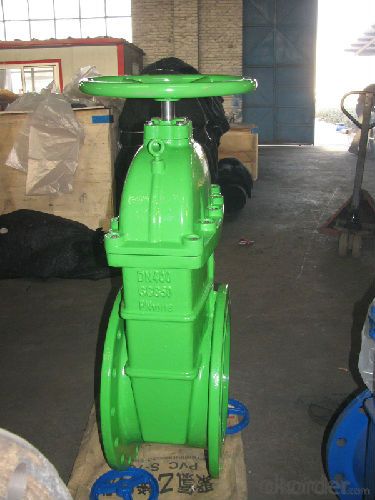
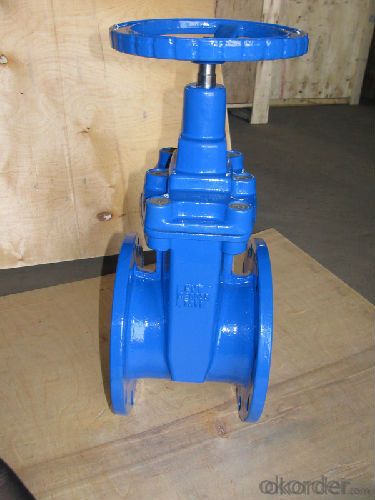
4. Specification of the Gate Valve:
1) Product information: the gate valves supplied are mainly used for adjusting water, steam, oil, gas, and natural gas in chemical industries
2) Standards: AWWA, DIN3352 F4/F5, BS5163, BS5150
3) Connection type: flanged type, push-on type, mechanical joint type, plain ends type
4) Material:
a) Body : Ductile Iron GGG500-7
b) Wedge : D/I , core fully vulcanized with NBR or EPDM rubber
c) Wedge Nut : Brass
d) Stem : Stainless steel , BS970 431S29 or DIN17440x20Cr13
e) Gasket : NBR
f) Bonnet : GGG500-7
g) O ring : NBR
h) Washer : Carbon steel or Stainless steel .
5) Size: 50-400mm/2" - 16"
5.FAQ
1. Can I get free samples?
A: Yes,we can provide you the free sample, but you need to bear their own delivery costs.
2. Can I request to change the form of packaging and transportation?
A:Yes, We can change the form of the packaging and transportation according to your request, but you have to bear their own costs incurred during this period and the spreads.
3. Can I request to advance the shipment?
A: It should be depends on whether there is sufficient inventory in our warehouse.
4. Can I have my own Logo on the product?
A: Yes, you can send us your drawing and we can make your logo, but you have to bear
their own the cost.
- Q: ok, after lots of exploring around online and from some great answers from this site I have found the problem to my explorer. The torque converter solenoid mounting clip broke. thats it!! new question, do i have to take off the valve body to remove the solenoid. If so any tips? its way new territory for me. I hate automatics!!
- What are you? 9 years?
- Q: where is the oil pressure relief valve at in a 2003 ford focus
- Oil Pressure Valve
- Q: I play the trumpet and I took it home for Christmas Break. On Friday I am playing Amazing Grace at Church for New Years Eve, but the problem is my valves on my Trumpet is sticking and I don't have any valve oil for it. Is there any other oil that I can use for the Valves? It will be really great! Thanks :)
- Unscrew the the valve cap on the main suitable decrease than the button. attempt to softly pull the valve out. you could might desire to paintings it backward and forward until it loosens up you could upload some oil around the the sting of the valve cylinder. as quickly as you have all 3 valves out sparkling all the debris off of the valve, you ought to use an sos pad to get a number of the heaver stuff off. Wipe each ingredient off with in straight forward terms somewhat of lighter fluid and a sparkling rag. sparkling the valve bores including your snake. Stuff a rag down each hollow to get the stuff the snake loosened up. Reoil the valves and the cylinders and reassemble.
- Q: i just bought a junky trumpet, didnt come with a mouthpiece... how can i tell that the valves work? They press in and dont stick, but im not sure about their functioning. Also there are no caps on the valves, will this affect playing? lastly, it has a stuck tuning slide, how can i get this to work again?
- whilst i develop into in intense college, I performed on a 3C and had a particularly good sound. in my view, i could in no way visit a smaller, shallower mouthpiece to play intense. i could quite develop my chops and be waiting to do it on a deeper mouthpiece. In college, I switched to and nonetheless at present play a Monette B2, that's analogous length to a a million a million/4C, and characteristic an excellent sound, and might play a intense G (4 ledger lines above the staff) and up on it. i exploit it for any group I play in, marching, stay overall performance, musical theatre, etc... ultimately it boils all the way down to private preferrence. %. the mouthpiece that feels the terrific to you and nonetheless can provide a good sound. you do not pick it so great and deep that your variety and sound go through, and you do not pick is purely too small and shallow which you get too outstanding and tinny of a sound. wish this facilitates.
- Q: Is there a product that can fit over a foot valve to give it further protection in muddy water? I am looking for something for forest firefighting in mind. Something like a screen box something else that can give it further protection. It would be nice if it was small, and compact. Pictures would definitely be an asset. Thanks to everyone that answers. Greatly appreciated.
- most foot valves i have bought come with a strainer attached perhaps you should look for that type. if your valve has a strainer you may consider making a further coarse strainer out of a ball of chicken wire and place this over the foot valve assembly(thats what i do for the cold water supply to my house) don't compress the chicken wire very small as it will block up i tie the wire filter on with galvanized wire then i can easily replace it if necessary ps i tried stainless steel pot scourers but they were to fine and blocked easily
- Q: Offcourse temp control valve controls temp, and pressure control valve controls pressure....and so on. I am wondering, what are the mechnical differences in the valves body and how are they operated in terms of process control.
- There okorder /
- Q: I have a T4-T10 and L5-S1 spinal injury and I recently found out that my tricuspid and my mitral valves leak. I have never had heart problems before I got the spinal injury. Do you think the valve leaks could have been from the trauma when I received the spinal injury?
- Maybe but usually MVP doesnt give people much problems and if it does usually sudden
- Q: i am hearing tapping on top under of vale cover sound like valve need adjusting
- time to change oil, use thicker oil or yep, adjust valves. not a monstrous project but time consuming. Need torque wrench, valve cover gasket and shim kit to adjust. It's a pain as u have two nuts on each valve adjustment rocker bolt. tightening causes the lower one to drop sometimes so u may find yourself adjusting the valves 2-3 times each. I did it on my old Acura with 78K miles. ran smoother. i dropped in a pulley kit and cold intake as well but afterwards. the head was real clean as I change oil regularly. I had tapping even after changing the knock valve so I knew the valve job was needed.
- Q: ive had my yz250f for more than a year and i havent had the valves adjusted......it still starts up in under 5 kicks and rides great.......are there any signs that indicate you need your valves adjusted besides not being able to start it?
- You'll hear the valves ticking. It will sound like a box of BBs clanking around in the top of the engine. Treat your engine to a valve adjustment and it will give you a long life, without any expensive engine repairs.
- Q: why do new motorcycles need to get their valves shimed alot? can someone explain how the whole valve adjusting thing works? why do some engine types require more attention? i have owned thumpers my whole life and never really thought about it. i was looking at this like cheap beater bike (hyosung gt250 v twin) and i read the valves need to be checked like 3 times in a short span, wtf??
- Your prospective Hyosung may require some more frequent adjustments because the initial wear on its machined surfaces would still be polishing each other off.... surfaces like your hardened valve seats against the sealing surfaces of the valves... Or, the hardened surfaces of the cam lobes against the rocker arms. If your Hyosung's engine has been properly engineered, then its components have been properly case hardened. After their initial microscopic machined imperfections have been polished smooth, they shouldn't have to be checked as often. The Hyosung 250 was designed in Hamamatsu Japan by the same people who design Suzukis. It should turn out to be a great motorcycle. Perhaps frequent valve checks are because it's high revving and air cooled.?.? I owned an air cooled KZ550 Kawasaki, once. It required valve checks every 3000 miles. On the other hand, my wife has a 2007 Corolla. It has a low revving, Double Over Head Cam, 4 valve per cylinder LIQUID cooled engine. It requires valve adjustments every 60,000 miles.
Send your message to us
Gate Valve for High Quality Water System on Sale
- Loading Port:
- China main port
- Payment Terms:
- TT or LC
- Min Order Qty:
- 1000 set
- Supply Capability:
- 60000 set/month
OKorder Service Pledge
OKorder Financial Service
Similar products
Hot products
Hot Searches
Related keywords
